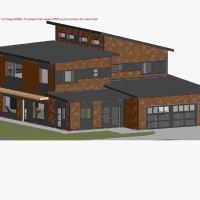Welcome! Here are the website rules, as well as some tips for using this forum.
Need to contact us? Visit https://heatinghelp.com/contact-us/.
Click here to Find a Contractor in your area.
If our community has helped you, please consider making a contribution to support this website. Thanks!
Radiant ceiling hardware
Options
RedMonte85
Member Posts: 71
For those of you who have installed radiant ceilings I have a few questions.
Is it better to use screws or will ring shank nails work fine for securing the furring strips to the bottom of the
ceilings joists?
For the turns in the loops, did you end up securing those to the drywall after it was installed? Or do you just leave those turns unsecured?
As far as insulation, is cellulose blown over the attic floor and radiant tubing ok?
Is it better to use screws or will ring shank nails work fine for securing the furring strips to the bottom of the
ceilings joists?
For the turns in the loops, did you end up securing those to the drywall after it was installed? Or do you just leave those turns unsecured?
As far as insulation, is cellulose blown over the attic floor and radiant tubing ok?
0
Comments
-
Depending on the area you are working... I like screws best. You can pull the strips nice and tight, remove and adjust if needed. I find it easier on my arms to use a screw gun and magnetic tip, compared to hammering.
I invested in an auto feed gun, it will drill thru the heavy transfer plates if you use drill point screws, pulls them nice and tight.
Let the loops free, they act as some expansion function.
Blow in insulation should be fine, quantity not quality with insulation, fiberglass, rock wool, cellulose, denim, material any work.Bob "hot rod" Rohr
trainer for Caleffi NA
Living the hydronic dream2 -
Thanks0
-
One last question, what are you using to secure the light guage aluminum plates? I was thinking some 1/2" staples through a pneumatic gun.0
-
I should add that half of my installation is an above sub floor install0
-
Screws! Remember components are expanding, and contracting.0
-
@RedMonte85 - just out of interest, what does your panel assembly look like. I will be doing radiant ceiling panels as well and am wondering what the furring strips are for in your assembly. I am planning the assembly shown in Modern Hydronic Heating per below and no furring strips are used.

Sean Wiens0 -
Nail guns tend to distort the thin plates and you lose some contact
For small areas I’d use self tapping hex head duct screws and a magnetic driver.
Get a pair of Silver Backs they keep the screws up where you need them.
Plus the obvious health benefit of magnetics on your wrists Bob "hot rod" Rohr
Bob "hot rod" Rohr
trainer for Caleffi NA
Living the hydronic dream0 -
Senwieco, mine will look like yours except instead of rigid foam strips and osb, I am using 1x3 furring to create the channels for the plates and tubing. My furring strips are running perpedicullarly across the bottoms of the ceiling joists.
After I pile cellulose on top, I think I will have hit my deminishing returns point for cost if I were to do the OSB and rigid foam.1 -
-
Categories
- All Categories
- 87.3K THE MAIN WALL
- 3.2K A-C, Heat Pumps & Refrigeration
- 61 Biomass
- 429 Carbon Monoxide Awareness
- 120 Chimneys & Flues
- 2.1K Domestic Hot Water
- 5.8K Gas Heating
- 115 Geothermal
- 166 Indoor-Air Quality
- 3.7K Oil Heating
- 77 Pipe Deterioration
- 1K Plumbing
- 6.5K Radiant Heating
- 395 Solar
- 15.7K Strictly Steam
- 3.4K Thermostats and Controls
- 56 Water Quality
- 51 Industry Classes
- 50 Job Opportunities
- 18 Recall Announcements



